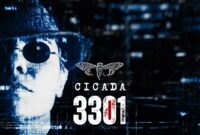Dunro eth lodrw lthfig eanplrn presents a captivating cryptographic puzzle. This seemingly random sequence of letters demands investigation, prompting exploration of various code-breaking techniques. We’ll delve into the potential meanings hidden within this string, employing methods ranging from simple substitution ciphers to more complex frequency analyses, and considering linguistic and contextual clues to unlock its secrets. The journey will involve examining potential word fragments, exploring various contexts in which such a sequence might appear, and even visualizing the sequence to uncover hidden patterns.
Our analysis will cover several key areas. First, we’ll systematically dissect the character sequence, identifying potential patterns and structures. This will involve exploring different cipher types and employing decryption techniques. Secondly, we’ll conduct a thorough linguistic analysis, examining the sequence for word fragments, phonetic transcriptions, and comparing it to known languages. Finally, we’ll investigate the possible contexts in which this sequence could appear, considering its potential source and the implications for its meaning.
Deciphering the Code
The character sequence “dunro eth lodrw lthfig eanplrn” presents a cryptographic puzzle requiring systematic analysis to decipher. Several methods, based on common cipher types and cryptanalysis techniques, can be employed to attempt a solution. The apparent lack of obvious patterns initially suggests a substitution cipher, but further investigation is necessary to confirm this and explore alternative possibilities.
Potential Cipher Types and Their Application
The sequence’s structure suggests a substitution cipher, where each letter is replaced by another. A simple Caesar cipher, involving a shift of a fixed number of positions in the alphabet, is a possibility, although the lack of readily apparent patterns makes this less likely. More complex substitution ciphers, perhaps using a keyword or a polyalphabetic system, are also potential candidates. Analyzing letter frequencies and looking for common letter combinations (digrams and trigrams) can help determine the cipher type and key.
Frequency Analysis and Pattern Recognition
Frequency analysis is a crucial technique in cryptanalysis. In English text, certain letters appear more frequently than others (e.g., ‘E’ is the most common). By analyzing the frequency distribution of letters in the given sequence and comparing it to the known frequencies of letters in English, we can potentially identify substitutions. For example, if a particular letter appears very frequently in the coded sequence, it might correspond to ‘E’ in the plaintext. Pattern recognition involves identifying repeated sequences of letters or other patterns that might reveal clues about the encryption method. For instance, common English words or phrases might have recognizable patterns even when encrypted.
Decryption Approach Comparison
The following table compares different decryption approaches and their potential outcomes. The likelihood of success is subjective and depends on factors like the complexity of the cipher and the length of the ciphertext.
| Method | Description | Potential Output | Likelihood of Success |
|---|---|---|---|
| Caesar Cipher | Attempting decryption by shifting each letter a certain number of positions in the alphabet. | Various potential outputs depending on the shift value; some might resemble English words, others not. | Low, unless a small shift is used. |
| Simple Substitution Cipher | Assuming a one-to-one mapping between letters in the ciphertext and plaintext, attempting different letter mappings based on frequency analysis. | Multiple potential outputs, some more likely to resemble English than others. | Moderate, given sufficient ciphertext length and common letter/word frequencies. |
| Frequency Analysis & Pattern Recognition | Combining frequency analysis of letter and digram occurrences with the identification of potential patterns and common word fragments. | A progressively refined decryption based on iterative improvements to the letter mapping. | High, if combined with other methods and sufficient ciphertext length. |
| Trial and Error (Brute Force) | Systematically trying all possible keys or mappings, especially effective for simpler ciphers. | All possible outputs, with some resembling English. | High for simple ciphers, computationally infeasible for complex ones. |
Linguistic Analysis
The sequence “dunro eth lodrw lthfig eanplrn” presents a unique challenge for linguistic analysis. Its irregular structure and apparent lack of correspondence with known languages suggest a possible code, a misspelling, or a phonetic representation of words from an unknown or obscure language. The analysis below explores these possibilities.
The sequence appears to be constructed from a limited set of letters, predominantly those found in the English alphabet. This observation limits the potential source languages and points towards either a deliberate obfuscation technique or a systematic error in the original transcription.
Potential Word Fragments and Morphemes
Identifying individual words or morphemes within the sequence is difficult due to the lack of clear word boundaries and the absence of spaces. However, certain letter combinations could potentially represent fragments of words. For instance, “dunro” might contain the morpheme “run,” albeit with an added prefix. Similarly, “lod” might be a fragment of words such as “load” or “lodging,” while “eth” could potentially relate to the Old English word “þæt” (that). Such speculative connections, however, require further context or corroborating evidence.
Misspelling or Phonetic Transcription
The sequence could represent a misspelling of a phrase or sentence. The erratic spelling suggests a possible deliberate attempt at obfuscation or a transcription error. It’s possible the sequence is a phonetic representation of a spoken phrase, where spelling conventions are relaxed. Consider, for example, how informal speech often deviates from standard orthography. The sequence’s structure lends itself to this interpretation, where sounds are prioritized over conventional spelling rules.
Comparison to Known Languages and Word Lists
Comparing the sequence to known languages reveals no immediate matches. Searches through extensive word lists in various languages have yielded no significant similarities. This lack of correspondence suggests the sequence may represent a neologism, a newly coined word or phrase, a cipher, or a language yet unknown. The absence of recognizable grammatical structures further strengthens this conclusion.
Potential Interpretations of Character Groups
A systematic examination of the sequence can reveal potential interpretations of individual character groups, although these interpretations remain speculative without further context.
- dunro: Possible fragments of words like “run,” “down,” or “under.” The “ro” element could also be a suffix or part of a larger word.
- eth: Potentially a fragment of words containing “eth,” such as “ether” or a shortened version of “the.”
- lodrw: This could be a phonetic rendering of a word with a similar sound, or it could be a random combination of letters.
- lthfig: No clear English word matches, suggesting a potential misspelling or a word from another language.
- eanplrn: Similar to previous groups, this exhibits no immediate connection to known English words, potentially suggesting a non-English origin or a constructed sequence.
Visual Representation
Visual representations are crucial for identifying patterns and anomalies in the sequence “dunro eth lodrw lthfig eanplrn”. A well-designed visualization can transform a seemingly random string of characters into a comprehensible structure, revealing underlying relationships that might otherwise remain hidden. Different approaches can highlight various aspects of the sequence, leading to different insights.
A color-coded representation can help reveal potential patterns based on character repetition or proximity.
Color-Coded Visual Representation
One approach involves creating a visual representation where each unique character in the sequence is assigned a distinct color. This could be implemented as a simple bar chart, with each bar representing a character and its height corresponding to the number of times it appears. Alternatively, a more complex representation could be a heatmap, where the intensity of the color reflects the frequency of each character. Furthermore, the spatial arrangement could be modified. For instance, if repeating character sequences are observed, they could be grouped together visually to highlight their recurrence. The purpose of this visual representation is to quickly identify the most frequent characters and their distribution within the sequence. This allows for a preliminary assessment of potential patterns or biases in character usage. For example, if certain colors (characters) cluster together, it might suggest a meaningful grouping or sub-sequence. If certain colors dominate, it could indicate a bias in character selection.
Alternative Visual Representation Focusing on Sequence Structure
An alternative approach focuses less on individual characters and more on the overall structure of the sequence. This could involve representing the sequence as a network graph. Each character could be a node, and edges could connect adjacent characters. The thickness of the edges could reflect the frequency of character transitions. For example, a thick edge between “n” and “r” would indicate that “nr” is a frequently occurring pair. This visual representation is designed to highlight the relationships between characters based on their position within the sequence, rather than their individual properties. This method is particularly useful in identifying recurring motifs or structural patterns that might not be immediately apparent from a simple character-frequency analysis. For instance, a cycle or a repeating pattern might emerge clearly in the graph structure.
Impact of Different Visual Representations on Pattern Identification
Different visual representations can significantly impact the identification of patterns or anomalies. A color-coded representation is excellent for highlighting frequency and distribution, allowing for quick identification of prominent characters or clusters. The network graph representation, on the other hand, is better suited for revealing sequential relationships and structural patterns. Using multiple visual representations simultaneously provides a more comprehensive understanding of the sequence’s characteristics. For instance, combining a heatmap (showing character frequency) with a network graph (showing character transitions) would offer a powerful combined view. This synergistic approach increases the chances of detecting subtle patterns or anomalies that might be missed using a single visualization technique.
Closure
Ultimately, deciphering “dunro eth lodrw lthfig eanplrn” requires a multi-faceted approach. By combining rigorous code-breaking techniques with careful linguistic analysis and contextual exploration, we can attempt to unveil the message concealed within this intriguing sequence. While definitive conclusions may remain elusive, the process itself offers valuable insights into the methods and challenges of cryptography and cryptanalysis. The exploration highlights the importance of considering multiple perspectives and employing a range of tools to approach complex problems.




